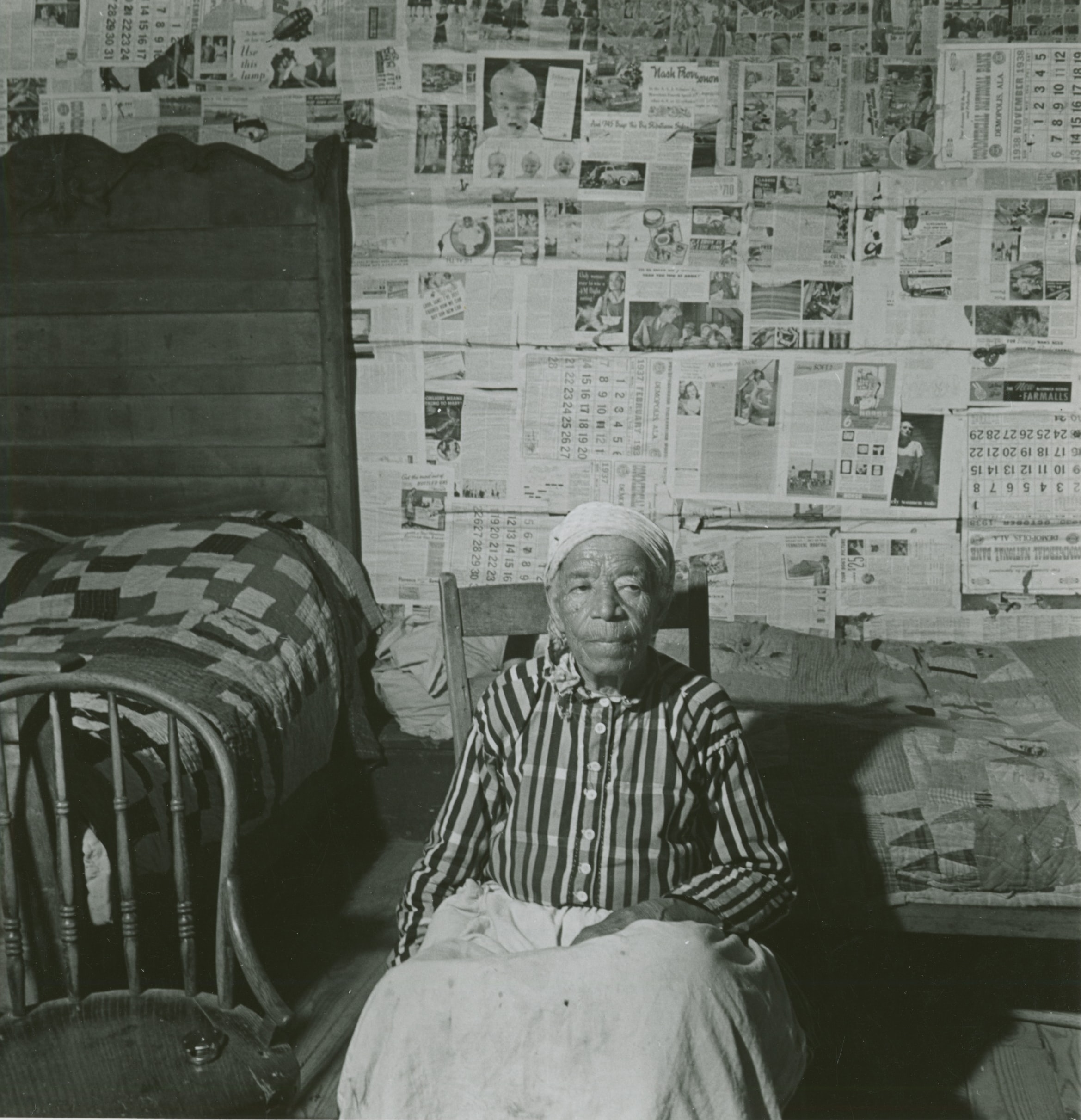While I was in business school, I wrote this analysis on the Montgomery Bus Boycotts for our Change Management class. After reading it again, I thought it was really pertinent to thinking sustainability of social movements in the age of #BLM #ENDSARS and similar movements all throughout the world.
Introduction
The Montgomery Bus Boycott was one of the largest and longest mobilizations of a community in the history of the civil rights movement. It set the standard for how major players like Martin Luther King, the NAACP and other organizations would mobilize, and effectively communicate and coordinate civil disobedience protest strategies all across the country. However, there are many questions and underlying topics that surround the Montgomery Bus Boycotts. Why Rosa Parks? What was the Montgomery Bus Boycotts looking to achieve? Was the Montgomery Bus Boycotts successful? In the following essay, I will explore many of these questions through the lens of change management theory.
Background
Late in the afternoon of Thursday, December 1st, 1955, Rosa Parks leaves work at the Montgomery Fair department store and boards a bus home. The bus fills up. A white man boards — but with no seats available he has to stand in the aisle. The bus driver orders the four front-most Blacks to surrender their seats so he can sit. Mrs. Parks recalls:
At his first request, didn’t any of us move. Then he spoke again and said, “You’d better make it light on yourselves and let me have those seats.” … When the [other] three people … stood up and moved into the aisle, I remained where I was. When the driver saw that I was still sitting there, he asked if I was going to stand up. I told him, no, I wasn’t. He said, “Well, if you don’t stand up, I’m going to have you arrested.” I told him to go on and have me arrested. He got off the bus and came back shortly. A few minutes later, two policemen got on the bus, and they approached me and asked if the driver had asked me to stand up, and I said yes, and they wanted to know why I didn’t. I told them I didn’t think I should have to stand up. After I had paid my fare and occupied a seat, I didn’t think I should have to give it up. They placed me under arrest then and had me to get in the police car, and I was taken to jail… — Rosa Parks. [1]
Rosa parks is then taken to jail and through a network of well connected friends, her bail is paid and the news of her arrest spreads like wildfire throughout the Montgomery community.
That night, students from the college nearby started making fliers that called for a one day bus boycott the next Monday. Friends of Rosa Parks start to build coalitions and develop the Montgomery Improvement Association (MIA) to lead the charge against Montgomery. Nixon, Rosa Parks friend and community leader within the NAACP, appoint a young pastor, Martin Luther King, as head MIA because he’s a young outsider who is not entrenched in the politics of the church establishment.
On Monday, December 5th, 1955 the bus boycott began. People walked to work, carpooled where they could and took taxis. That same day, Rosa Parks was charged with violating the segregation law and faced a $14 dollar fine. Due to the verdict and a successful one day boycott, the leadership decided to continue the boycott. For the next year, MIA coordinated with Montgomery community organizations to sustain the bus boycott through facilitating carpool routes, leveraging taxi services and coordinating other resistance strategies. When Montgomery didn’t change their segregation policy, lawyers associated with the MIA and NAACP chose to file a federal lawsuit challenging the constitutionality of the Montgomery segregation laws.
In June 1956, the federal court in Montgomery ruled in Browder v. Gayle that Alabama’s bus segregation laws, both city and state, violated the Fourteenth Amendment and were unconstitutional. The U.S supreme court upheld the decision later that year. In December, after an estimated $250,000 in lost bus revenue and millions in lost tax revenue and retail, the Montgomery Bus Boycott finally came to an end.
Analysis
As a result of the Montgomery Bus Boycott, civil rights leaders are finally given a tangible model on how to facilitate change in society. While many of the concepts of nonviolence and civil disobedience are based in the teachings of Gandhi and Jesus Christ, there was no real macro model which mobilized institutions and coordinated people in the way that would amount to change. Ultimately, change in the civil rights movement was three fold. For the sake of simplicity, I’ll focus particularly on the Montgomery Bus Boycott. The three major changes include
- Transition from individual to community action
- Economic concept of equality
- Change in the laws that perpetuated segregation
Transition from individual to community action
Rosa Parks wasn’t the first person to be arrested for not giving up their seat on a bus in Montgomery. Based on our reading in The Power of Habit, there are three things that lead to the full out bus boycott.
“A movement starts because of the social habits of friendship and the strong ties between
close acquaintances. It grows because of the habits of a community, and the weak ties that hold neighborhoods and clans together. And it endures because a movements’ leaders give participants new habits that create a fresh sense of identity and a feeling of ownership.” -Power of Habit pg 155
Duhigg argues that the reason Rosa Parks sparks the Montgomery Bus Boycotts is because of her close varied connections throughout the community of Montgomery. She has a diverse group of close friends that vary in profession, social status and interests. Once they hear about how their friend had been arrested, they are more likely to act and bring other close friends to action.
We see this play out in how easily accessible organizations like the NAACP, college professors and church members became throughout her story. This doesn’t play out the same way for others who were arrested. The power of Rosa Parks network galvanizes friends to feel directly offended as if they were the ones that were arrested. “If it happened to Rosa, it could happen to us.” This energy is leveraged to facilitate the actions steps that mobilize the whole community for the boycott.
Another spark that helps facilitate larger community action is the emergence of the Montgomery Improvement Association and of Martin Luther King’s leadership. Unless E.D Nixon was reading change management strategy 20 years into the future, he was ahead of his time when he suggested that Martin Luther King head the newly formed Montgomery Improvement Association. There were three very important characteristics that Martin Luther King possessed that made him an ideal candidate. Most importantly, he was a new member of the Montgomery community that was just starting to establish his identity and his church. He was younger than most of the ministers, so he had the energy and electric emotion to lead a group of people. Lastly, he was minister, which gave him the language to speak to a mass audience that was predominately Christian in belief.
Martin Luther King uses his newly appointed role to rally people around the concepts of civil disobedience and brotherhood. He unites people by consolidating the message and making it appeal to everyone. While MLK is effectively communicating for the bus boycott, MIA is developing the infrastructure to support the logistics for a yearlong battle. MLK brings people together through integrating non-violence into Christian doctrine and ties a people to a larger cause than themselves. The MIA creates new habit for the Black community in Montgomery that include walking to work, carpooling and taxi services. The organization and higher calling are what ultimately sustains the Montgomery bus boycotts for a year.
Economic concept of equality
The Montgomery Bus Boycott was one of the largest mobilizations of a particular group in history of the United States. While there was segregation was at the center of the Montgomery bus boycotts, there was a more basic fundamental that one person’s 10 cents are worth the same amount as the next persons. The Black population in Montgomery was about 40,000 people. Blacks represented more than 75% of the ridership on the bus system. Imagine losing almost 75% of your ridership for a year. For a long time, there was a racial hierarchy/value given to money from whites versus blacks. The bus boycott was the first major example of how much economic power a community could have if they came together. Anyone with that large of a purchasing power cannot be ignored. Thurgood Marshall has been quoted saying that the Montgomery bus boycotts were won through the courts and not through the boycott in which he is technically correct. However, the hearts, minds and pockets of merchants, drivers and administration had already been pushed to the edge. The financial implications of the boycott were too enormous not to ignore but ultimately, for the first time, people became aware of how much spending power the black community had. The black community saw this as well and quickly replicated similar strategies all around the country.
Change in the laws that perpetuated segregation
Social norms play a significant role in determining legal structures. In the common law perspective, most laws are derived out of a set of common norms (core Christian values) Social norms that are normally entrenched in society for an extended period of time eventually convert into legal frameworks to sustain the social norms past societal changes. When Black leaders in Montgomery county started discourse to prepare a legal case against the city of Montgomery and Alabama segregation laws, they were battling a legacy of social hierarchy, through and policies were relics of southern society pre- civil war. These laws were put in place to institutionalize a mindset that decreased the rights of blacks positioned whites as the hegemonic power in the south. Ultimately, this was the long term, sustainable change that the Black community in Montgomery, AL mobilized and fought to reach.
Montgomery Bus Boycott through a change management perspective
After research on the Montgomery Bus Boycott and applying some of the change management theories we’ve learned in class, I found that the Montgomery bus boycott is not only an exact fit within the Kotter model, but a more integrated application. In this next section, I will break down the Kotter model and explain for each section how the Montgomery bus boycott applies.
Establish a sense of urgency
Upon Rosa Parks arrest, her mother quickly calls all of her friends and from there the sense of urgency is born. Imagine hearing that one of your friends was in jail for a crime that might have landed you in jail as well. Many of Rosa Parks friends mobilize the resources and people needed to not only get her out of jail but facilitate the boycott. This is an example of perfect place and perfect timing. Civil rights leaders are more equipped to establish a sense of urgency here because of Rosa Parks role in the community. She is very connected and helps to bring a diverse group of people together that normally wouldn’t be in the same group at any other time. By leveraging a perfect opportunity, the sense of urgency is timing. Its an opportunity to get back at Montgomery bus system for disrespecting “one of our own” .
Create a Guiding Coalition
During the development of the Montgomery Improvement Association, Nixon pushes for Martin Luther King to be the face, leader, and voice of the organization, thus making him the head leader of the Montgomery bus boycott. The creation of the Montgomery Improvement Association is the first step in building a guiding coalition, but the most important move was placing Martin Luther King as head of the organization. As I mentioned previously, MLK’s position in the community, in all facets, makes him an ideal candidate to lead the Montgomery Improvement Association. He’s an outsider, young and a minister. These three characteristics play an intricate role in his ability to reach the masses and made him one of the most effective leaders in the civil rights era.
Develop a Vision and a Strategy
The MIA was the operational tool of the Montgomery bus boycott. They developed a message and strategy that MLK stated:
“I want it to be known that we’re going to work with grim and bold determination – to gain justice on the buses in this city. And we are not wrong. We are not wrong in what we are doing. If we are wrong – the Supreme Court of this nation is wrong. If we are wrong – God Almighty is wrong! And, we are determined here in Montgomery to work and fight until justice rolls down like water and righteousness like a mighty stream!” [3]
MIA developed a goal that eventually stalled negotiations they were:
- Treat Negroes with greater courtesy
- Hire Negro drivers for Negro routes
- Desegregate bus seating.
The overall strategy was two prong. Blacks would boycott the bus system until demands were met and Black leaders would look for ways to challenge the legality of the policy in higher courts.
Communicate the Change Vision
I believe that this is the true differentiator that takes the Montgomery bus boycott and makes it sustainable. It all goes back to the selection of Martin Luther King as the head of MIA. There were major pieces of social change entangled in the boycott but King’s knowledge in Christianity and his ability to mold the conversation and the message makes it palpable and translatable to audiences outside of the black community. Even within the black community in the south, the church is the cornerstone of society and appeals to the masses. King takes many of the ideals and messaging and integrates in into his sermons and applies scripture as arguments for equality. It’s the equivalent to some of gummy vitamins, masked in something you know and enjoy but inside is something that’s really good for your body. In my opinion, this is what gives the civil right movement the legs it needs to be replicable and appeal to those that are who are not black but share Christian values.
Empower Broad Based Action
Montgomery Improvement Association was the central hub of logistics during the early periods of the Montgomery bus boycotts. However, the boycott is sustained once people start taking ownership and start to own that they are individually boycotting the bus system. This is when you start to see weekly block meetings setting up logistics for how people will get to work, and other people start to move into management/leadership roles within the organization. The ultimate goal of empowering broad-based action is that the change agent doesn’t have to be the person enacting or facilitating the change vision and strategy. MIA achieved this by getting buy in early in the process and through the effective messaging by Martin Luther King that pressed a message of long-term benefit and endurance. (Most of the time, embalmed in Christian doctrine.)
Plan and Generate Short-Term Wins
The most effective short-term win was the one-day boycott developed by MIA and Black leaders. Once people saw how feasible it could be to continue the boycott, it almost seemed logical to continue until demands were met. This is also another interesting step that was altered due to the selection of MLK. As a minister in Christianity, it is easy to preach postponing immediate gain for long term wins as long as people are constantly aware of the long-term goal. I also believe that the belief in delayed gratification is what also sustained the Montgomery bus boycott for as long as it did. There were still short-term victories, but MIA and MLK did a great job of celebrating the small victories that did occur and managing expectations for the long term.
Consolidate Wins and Produce More Change
For all intents and purposes, the black community in Montgomery was winning the boycott. The bus system was losing thousands of dollars a day, retailers were losing out on income and Montgomery was losing out on tax income. However, in order to truly win and produce the maximum amount of change, MIA negotiated with the city of Montgomery to alter their segregation policies. After stalled negotiations, MIA and the NAACP decided to make a legal case for the unconstitutionality of Montgomery and Alabama’s policies.
Anchor the New Approaches in the Culture
The supreme court ultimately rules that Montgomery and Alabama’s laws are unconstitutional under the 14th amendment. As previously stated in the paper, laws are social norms that have been agreed upon as the common actions/ policies toward citizens. By challenging and having the segregation laws overturned, the law sets a whole new precedence by which other laws can be exploited and changed. Ultimately, the supreme court ruling ensures the longevity of the essence of the Montgomery bus boycott.
Conclusion
While the Kotter model is a great fit to the Montgomery bus boycott, there are great lessons to be learned from one of the most pivotal boycotts in the history of our country. Most importantly, your change thesis has to be palatable to your champions but eventually has to get through to the enemies of change. MLK was great at taking civil rights arguments and integrating concepts into Christianity. By doing that, it disarms most of the arguments the opposing side uses. It’s important when facilitating change, you pick leaders in the change coalition that speak the language of the masses and effectively know how to communicate a streamlined message. Secondly, momentum is significantly important in establishing a sense of urgency. The effectiveness of Rosa Park’s network is only utilized in the moment. If the boycott started a week after, it wouldn’t have had the same adoption rate. Building of a momentous occasion builds a larger case for the sense of urgency. Lastly, change isn’t just a change in habit or beliefs, but it needs to be founded in policy and governance. The Montgomery bus boycott is successful because it changes the hearts and minds of a majority of the people involved but the defining and sustaining success lies in the policies being declared as unconstitutional. In organizational change management, its important to facilitate change but sometime the best way to facilitate change and sustain it is through policy and governance interventions. The Montgomery bus boycott would serve as model for future civil rights battles all across the country. While certain elements couldn’t be replicated, the core served as a great model for leaders to apply.
Bibliography
Berg, Allison,“Trauma and Testimony in Black Women’s Civil Rights Memoirs: The Montgomery Bus Boycott and the Women Who Started It, Warriors Don’t Cry, and From the Mississippi
Boycott. DVD, directed by Clark Johnson. Los Angeles: Home Box Office, Inc., 2001.
Burns, Stewart, ed. Daybreak of Freedom: The Montgomery Bus Boycott. Chapel Hill: University of North Carolina Press, 1997.
Duhigg, Charles The Power of Habit Random House LLC, Feb 28, 2012
Eyes on the Prize: Awakenings (1954-1956 ). DVD, directed by Henry Hampton. Boston: Blackside, 1987.
Gray, Fred D. Bus Ride to Justice. Montgomery: Black Belt Press, 1994.
King, Martin Luther, Jr. Stride Toward Freedom. New York: Harper, 1958.
Robinson, Jo Ann Gibson. The Montgomery Bus Boycott and the Women Who Started It. Knoxville: University of Tennessee Press, 1987.
Thornton, J. Mills III. Dividing Lines. Tuscaloosa: University of Alabama Press, 2002.





